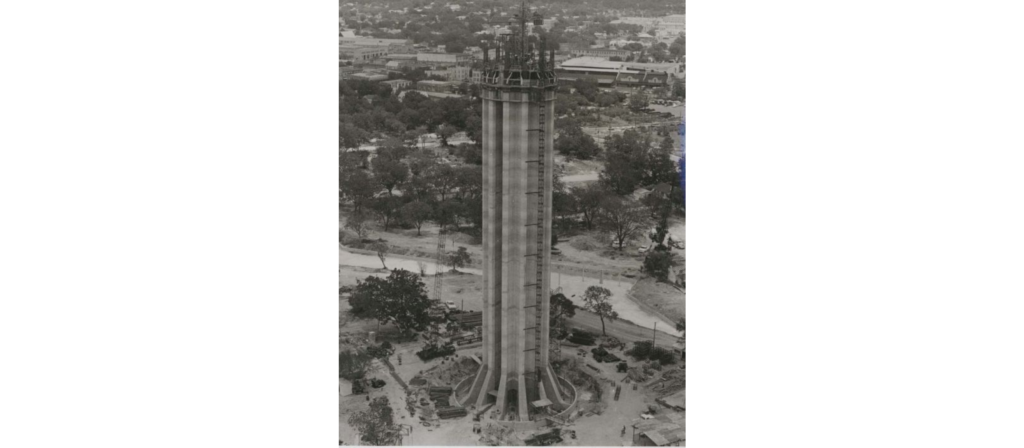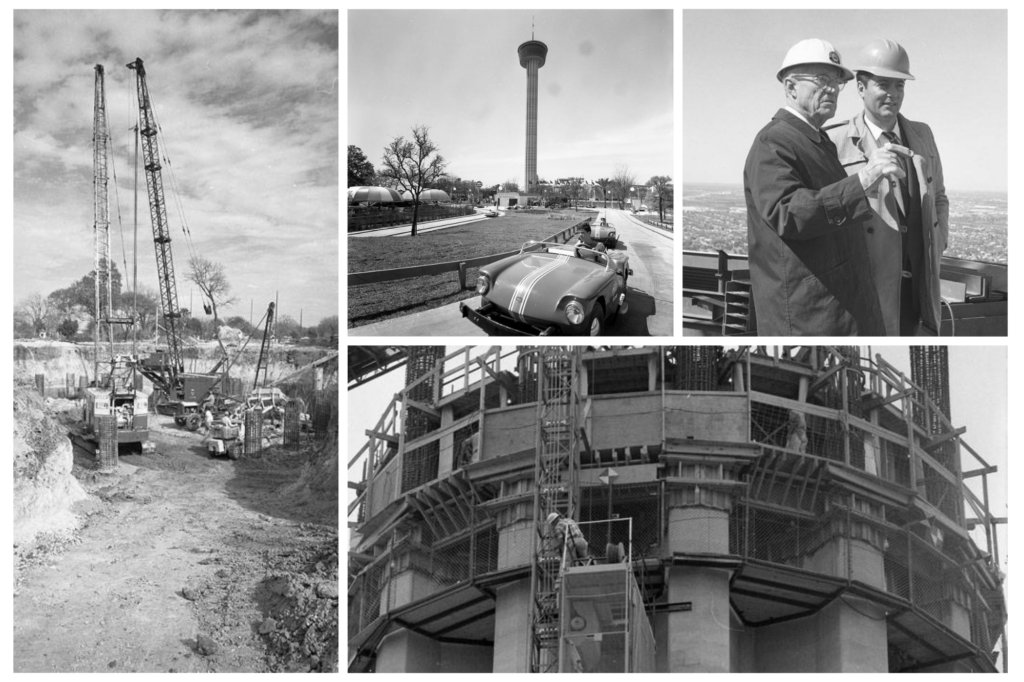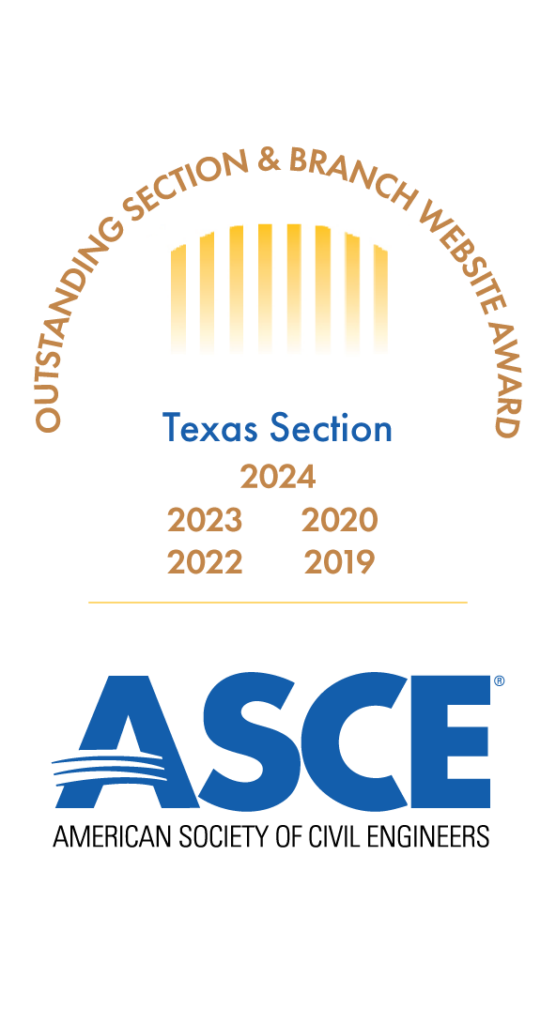Building of the Tower of the Americas
by Melinda Luna PE | History & Heritage Committee Chair
December 2022

The Tower of the Americas was built to be part of the World Fair HemisFair ’68 and would also celebrate the 250th anniversary of the founding of the city of San Antonio. By a majority vote, the City of San Antonio approved 5.2 million dollars in bonds for the construction of the tower. As soon as the financial documents were signed, the clearing of the site for the tower started within hours on August 9, 1966. The firms of Darrash & Lyda and H.A. Lott Construction Company of Houston were the low bidders of the project. H. A. Lott had been involved in the construction of the Astrodome. O’Neil Ford was the architect.

The construction of the tower had its challenges, including taking eighteen months to build. Construction workers worked around the clock during three shifts: 7 am to 3 pm, 3:30 pm to 11 pm, and 11 pm to 7 am. The first shift had men working to put in place the steel and pour the concrete. The second shift also had men placing steel to get ahead of the slip form. The night shift worked on the stairs to the tower. A slip form would move 3 to 20 inches an hour, depending on the construction, to hold the concrete in place long enough to harden. The workforce was made up of over three thousand men from all parts of Texas. Some of these workers were recruited after working on the Pecos River High bridge since the workers were used to working at heights.
Progress was carefully tracked, but due to labor strikes, bad weather, and construction issues, the construction was lagging in late 1967. The City officials also stated since the construction was so unique, equipment and tool had to be modified for the construction, and this also took some time. Jack Trawick of the HemisFair ’68 staff gave talks about the construction to other civil engineers, such as the ASCE Austin branch, in February 1967. One of the problems faced during construction was the raising of the rotating building in October of 1967. Three rods of the twenty-four support rods broke, and the building had to be held in place by a crane. There was an investigation into why the rods failed, and nothing could be found in this research that showed the results. The roundhouse was left tilted until the building was leveled. The roundhouse or top house is 76 feet tall and rotates about the 45-foot diameter shaft. In total, there were 4000 cubic yards of concrete reported to be used in the tower project.
The roundhouse or top house is 76 feet tall and rotates about the 45-foot diameter shaft. In total, there were 4000 cubic yards of concrete reported to be used in the tower project.

The tower was soon an iconic symbol of the City of San Antonio. It is still the tallest building in the city. It is the second-tallest observation tower in the United States. It was the centerpiece of the HemisFair. Over six million people visited the tower in the six months of operation during the HemisFair. Newspapers all over the state encouraged visitors to drive to San Antonio to see the tower in person. The public was even engaged in helping to name the tower. Out of thousands of entries, the Tower of the Americas was submitted the most times. The winner was selected by the earliest postmark and received an all-expense paid round trip to San Antonio.
The everyday operation of the tower was not without its issues. There were several instances where visitors were stuck because the elevators did not work due to debris in the elevator cables or power failures. There are three elevators and a set of stairs that were included in the project. The observation tower deck has the best view of the area and is probably a memory most people have as it is frequented by millions of visitors. The tower is seven hundred and fifty feet tall, continuously poured concrete tower is twenty-two feet higher than the Seattle Space Needle built in 1962 for the 1962 Worlds fair. Fifty-four years later, the Tower of the Americas is still having visitors use its observation tower and attractions. The Tower of the Americas is one of the most visited sites in San Antonio and is the second-highest observation tower in the US. The San Antonio Skyline would not be as recognizable without the building of this engineering wonder.

Photographic resources from: Zintgraff Studio Photograph Collection housed at the University of Texas at San Antonio


